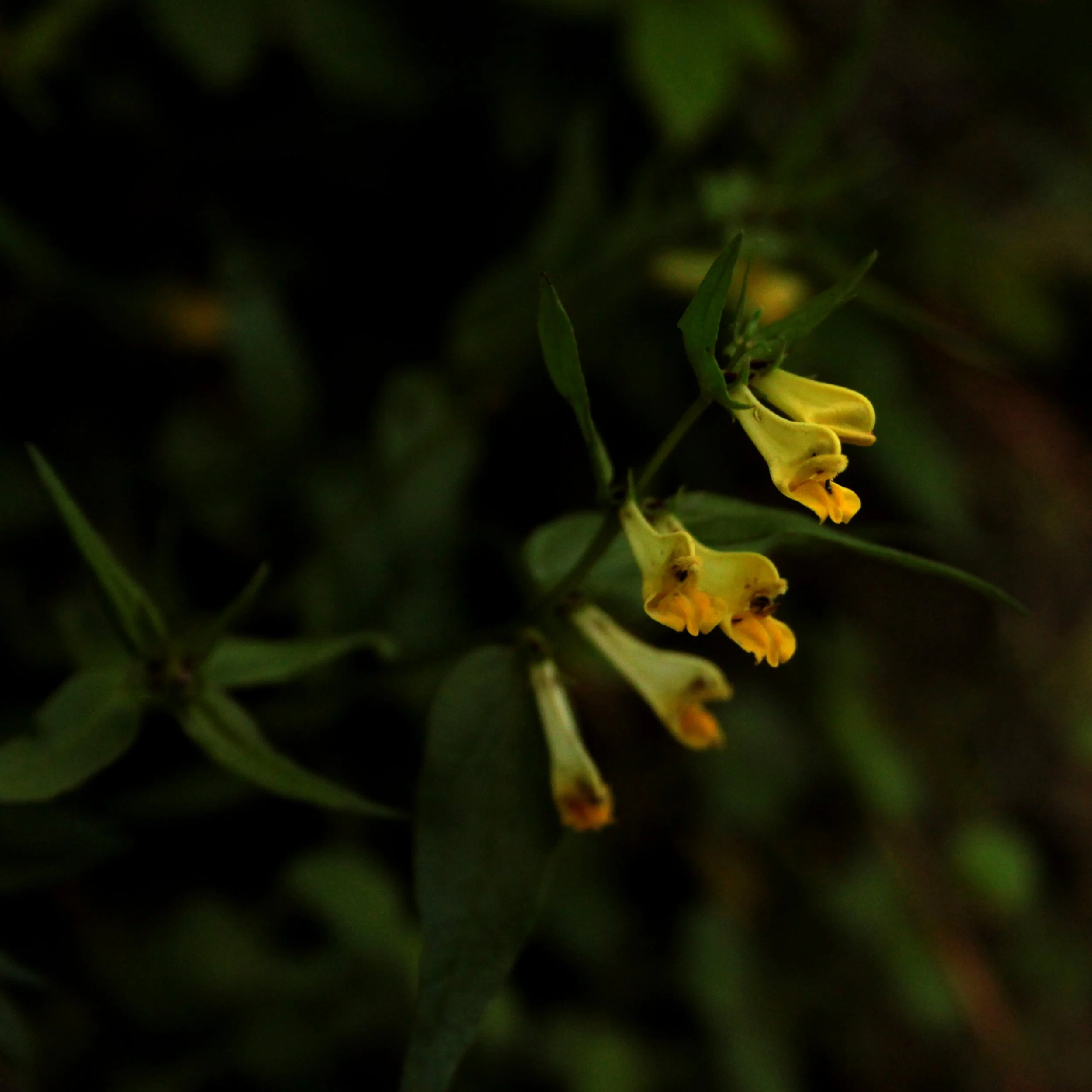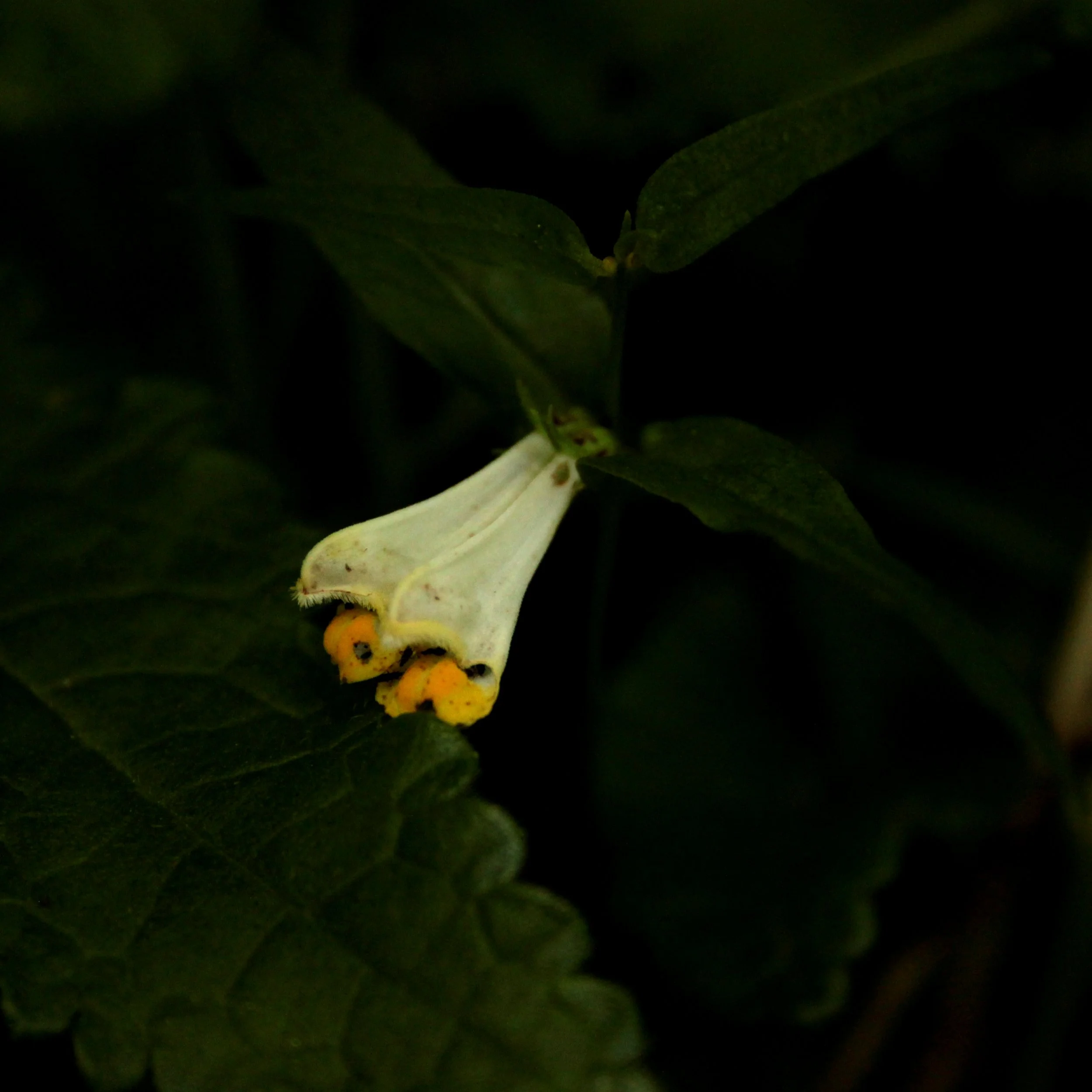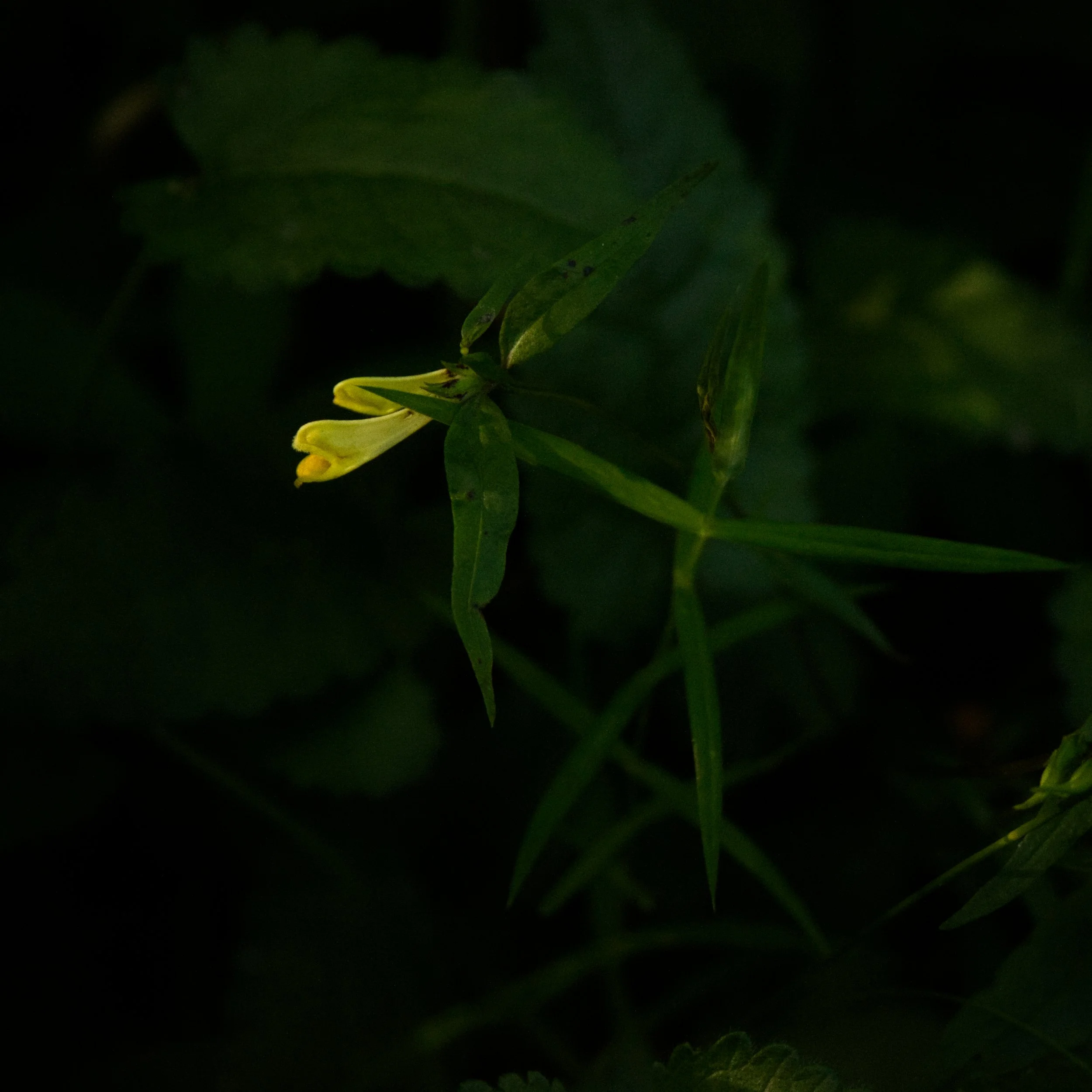9 July 2024
Cow Wheat and the Circular Dance of Wood Ants
Welsh common names: Gliniogai, Gliniogai Melyn, Gliniogai Cyffredin, Buelith, Biwlys, Cludogai, Llosglys
English common name: Cow Wheat
Scientific name: Melampyrum pratense
Short in stature with skinny leaves that taper to a point, cow wheat can be found on woodland floors emerging amongst grasses and other low-lying shady foliage. The flowers are distinctive; pale tubular petals that vary from lemony yellow to almost white, protruding from the stem in pairs with gaping fuzzy mouths, like strange chicks waiting to be fed.
The plant has long been associated with wheat, illustrated by both its common and scientific names: melampyrum, derives from the Greek melas, meaning black, and pyros, meaning wheat. This is possibly because the seeds resemble grains of wheat, which prompted Medieval peasants to gather and grind them into flour, the cow wheat darkening the colour, resulting in ‘blackened bread’.
It seems cows were also partial to the plant and many sources list it as animal fodder as it was believed to improve the quality of milk, resulting in better butter. Eighteenth century Swedish botanist Carl Linnaeus wrote:
"When cows are fed in fields where the 'Meadow Cow-wheat' is abundant, the butter yielded by their milk is peculiarly rich and of a brilliant yellow colour”.
Cow Wheat’s use as fodder is reflected in two Welsh common names: Buelith and Biwlys. Buelith is made up of bual, meaning wild ox/bison/buffalo/fallow deer, and llith: meal for cattle and horses made from grain or bran boiled in water - a literal translation being ‘Ox-meal’, or something similar. Biwlys simply translates to Cow-plant; biw meaning cow/cattle, and lys being an archaic botanical term for plant.
The primary Welsh name for Cow Wheat however, is Gliniogai. The etymology of the word is somewhat vague, but gliniog means ‘kneed, jointed, knotted’ - possibly referring to the appearance or structure of the plant, and in my opinion, when viewed from above the flowers strongly resemble anatomical drawings of knee-joints, with the lower lip providing the shape of the articular cartilage. How this might have become a common moniker is peculiar though, as presumably most folk in rural Wales wouldn’t have been familiar with the inner workings of knee-joints, apart from maybe vets and local doctors.
Llosglys translates to ‘burn-plant’; llosg meaning burning or scalding, possibly suggesting an old use as a herbal remedy for burns, although I’ve not come across any other sources or common names indicating this but perhaps the treatment was localised in Wales.
Cow Wheat obtains what it needs through a variety of complex manoeuvres that lend the inconspicuous plant an air of cunning creativity and self-reliance; what it can’t persuade others to do, it will do itself. The plant is hemi-parasitic, meaning the roots feed off those of others to obtain additional nutrients. The oblong flowers produce nectar that can only be reached by insects with a long proboscis (tongue) such as bees, however, if a flower isn’t pollinated, it will pollinate itself, producing seeds that initiate an ancient and ongoing dance with wood ants.
A sweet liquid is secreted from glands below the lower petals, attracting the ants to the seeds which feature an elaiosome; a fleshy attachment that’s rich in nutrients, which the ants carry back to their nests to feed on. They then discard the hard part of the seed containing the embryo, leaving it to germinate amongst the dead bodies and frass (ant waste), thus creating a nutritious and sheltered place for the seeds to germinate. This method of seed dispersal is called myrmecochory, derived from the Greek myrmex, meaning ant, and khoreíā, meaning circular dance or motion.
An additional Welsh name, Cludogai, may indicate Welsh knowledge of this subterranean dance. Cludo translates to ‘conveying, caravan, carriage, the action of carrying; load, burden, pack’ which could refer to the plant’s role fuelling load-bearing oxen, or - possibly - the ants method of transporting seeds.
As ants don’t roam very far in search of food, cow wheat is an indicator of ancient woodland, as established plants have likely germinated from seeds that have travelled just a few feet. The plant is also a food source for larva of the rare Heath fritillary butterfly (also known as woodman’s follower) and can be a promising place to try and spot a copper speckled wing.
If you know of any additional Welsh plant names, tales, alternative translations or corrections, please let me know! You can get in touch via the contact page.
Translations made using Geiriadur Prifysgol Cymru: https://geiriadur.ac.uk/gpc/gpc.html
Photos by Esther Williams, taken in Hook, Pembrokeshire.
Disclaimer: don’t consume or use wild plants for health purposes without speaking to a medical professional first. Be cautious if foraging and only gather plants that you are certain of. These essays are intended to pique interest rather than act as a robust edible or medicinal guide.
References:
Welsh Names of Plants by Dafydd Davies and Arthur Jones
http://barnsleybiodiversity.org.uk/ancientwoodland_indicators.html
https://durhamlandscape.info/durham-landscape/ancient-woodland-indicator/
https://www.sciencedirect.com/science/article/pii/S1433831909000365
http://www.flowersinsweden.com/Melampyrumpratense_page.htm
https://botanical.com/botanical/mgmh/c/cowwh113.html
https://www.wildlifetrusts.org/wildlife-explorer/wildflowers/common-cow-wheat




